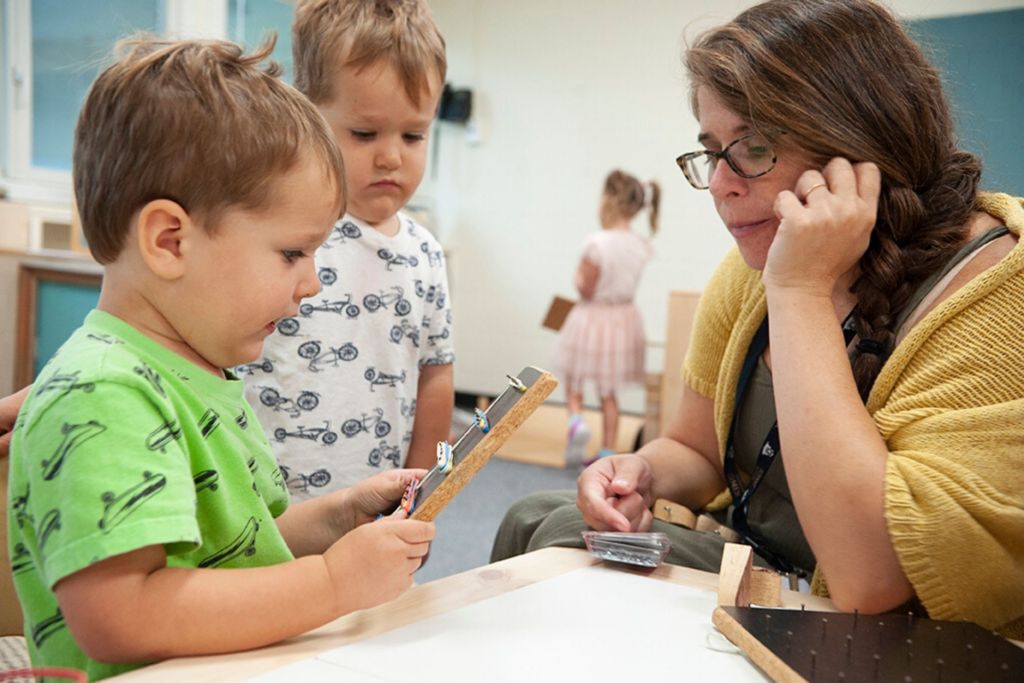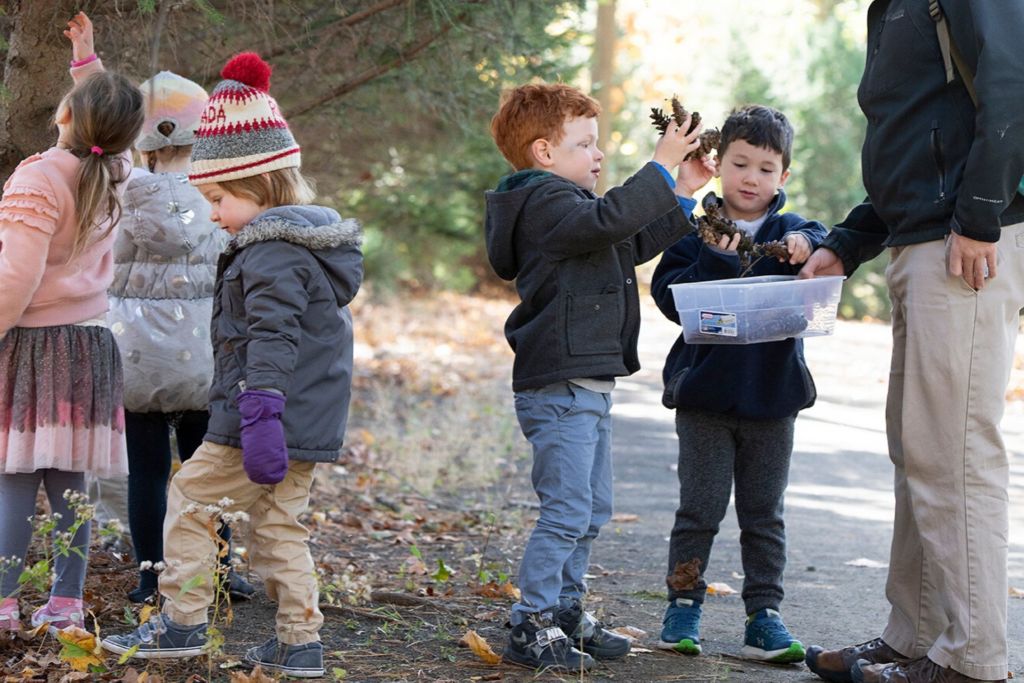King’s New Early Childhood Program

Students are empowered by their natural curiosity in King’s new Reggio-inspired Early Childhood program
The project was just getting started when PreK students, starting at age 3, realized the construction of their classroom forest faced a problem: they had eleven builders and only one hammer. This was unacceptable. The team, including their teacher Jennifer Agro, gathered to consider solutions. They examined the tool: What is the hammer made out of? Do we have materials to make more hammers? What tools might we need?
They got to work sketching mockups, taking measurements, and mapping plans. They gathered sticks and blocks. They tasked Mrs. Agro with finding a drill. In no time the flurry of activity produced ten hammers and the team headed back to the forest.
Students eluded the confines of a traditional classroom and employed art, math, team building, and collaboration skills to overcome an obstacle. This process of following natural curiosity and wonder throughout the day, with guidance from the teacher, is central to King’s use of the Reggio Emilia approach to early childhood education. The curriculum is self-guided, as students learn through experience in a relationship-driven environment.
“Students are empowered by their natural curiosity and wonder to be researchers first,” said Amy Vorenberg, Head of the Lower School. “They are scientists who are being supported by the skills of a teacher who understands emergent curriculum.”

This Reggio approach is exactly what drew Mrs. Agro to early childhood education. “Little children being able to take tools and make things and learn from their own experience and their own doing really made a lot of sense. The idea of being a teacher whose central role was that of a facilitator resonated deeply with me.”
The child-centric approach is evident in the setup of the classroom itself. In the shadow of the forest construction, children have access to activities that serve as vehicles for skill development including a watercolor station, a sewing machine corner, a light laboratory, and a cozy library nook. The setting allows children to practice fine and gross motor skills through creative expression.
“When you are teaching a four-year-old child to have a correct pencil grip, part of having the correct grip is having the dexterity and the fine motor skills to hold the pencil correctly. You can do that in a thousand different ways,” explained Mrs. Vorenberg. “One way is to have a child hold a pencil over and over and over again. That is monotonous and sometimes painful and does not lead to the child falling in love with holding a pencil. Whereas if you work with children in a way that encourages them to ask questions and empower them to try all sorts of activities to build their fine motor skills, including using writing tools, they will acquire the same skills as children in other classrooms. But the difference is they will also have confidence in their ability to ask questions, to gather data and form answers, and to become experts in their areas of interest. And that is incredibly empowering when you are four years-old.”

This student-led approach to curriculum is not restricted to King’s PreK. The Kindergarten class recently took an autumnal nature walk on campus collecting items that they found interesting. When they returned to class to sort their bounty of leaves, rocks, and acorns, a conversation ensued with students wondering ‘what is alive? and what is a seed?’ Students pursued their inquiry by planting seeds. In a separate classroom, Grade 1 students focused on the community of Stamford which led to primary source interviews with Mayor Martin and members of the police and fire departments.
“We trust in the intellect of young children and our teachers believe in the relationship between themselves as the teachers and the children as the learners. In the classrooms at King, relational work is about the interaction between the student and teacher to build skills, knowledge, and expertise,” said Mrs. Vorenberg.
Back in the PreK classroom, the richness of the forest reflects the many questions and conversations that the construction process presented. Wind chimes spin in the breeze and beads shimmer off the leaves with light; a student wears a knit cap resembling an owl and another dons a bat hat, while fox tails pop up, as well. The study leads to a lesson outside where Mrs. Argo distributes umbrellas and sprays students with water as they discuss the waterproof nature of a beaver’s coat.
“The learning experience is so joyful and happy, and it is also empowering children by honoring their natural curiosity. I am very excited about the environment and the future of our youngest students as we continue to develop this amazing program,” exclaimed Mrs. Vorenberg.
To learn more about King’s Early Childhood program, visit their website.
Watch the video below to learn more.
